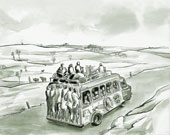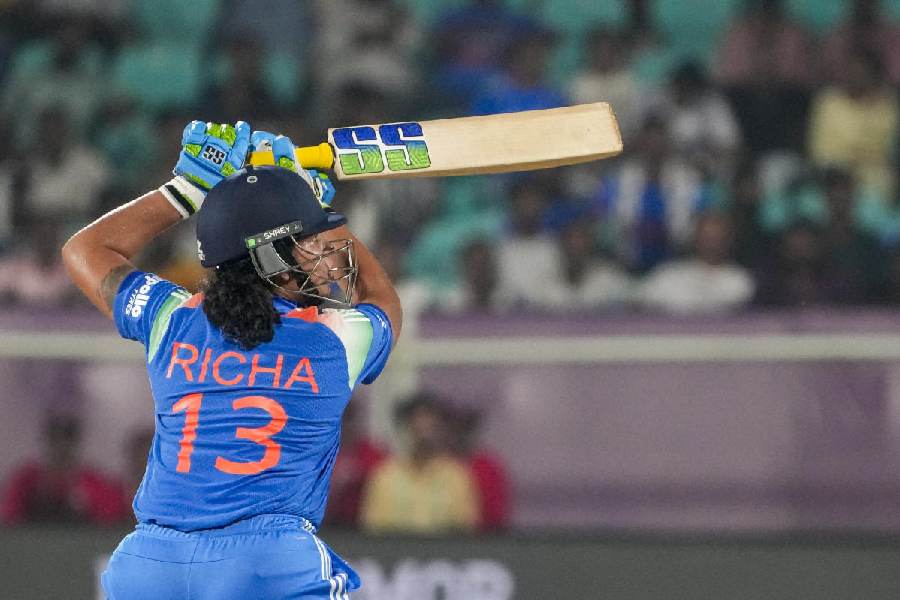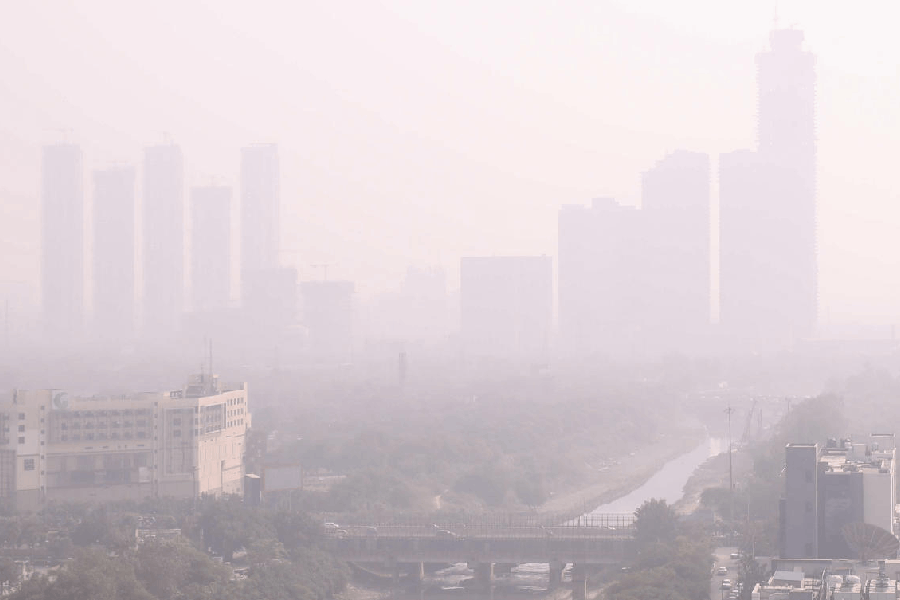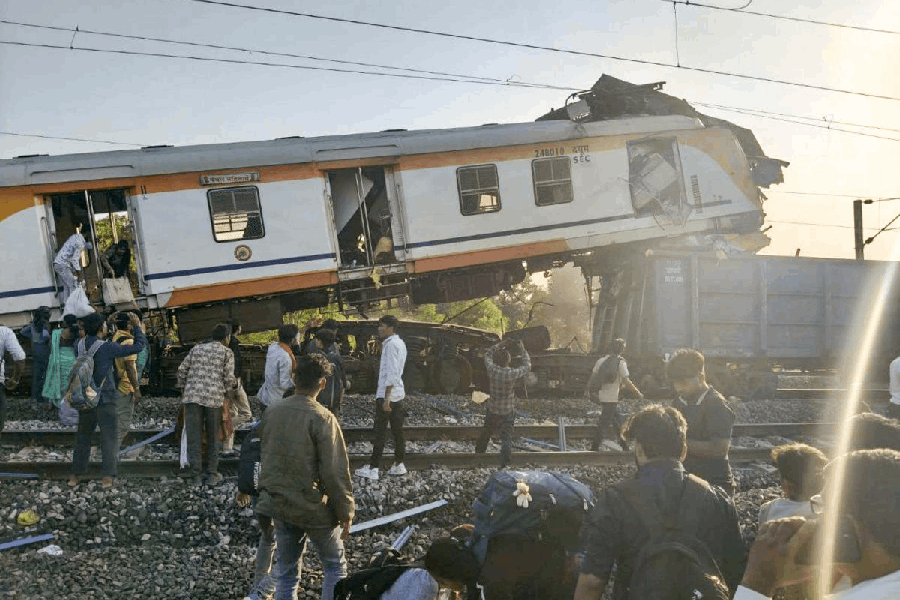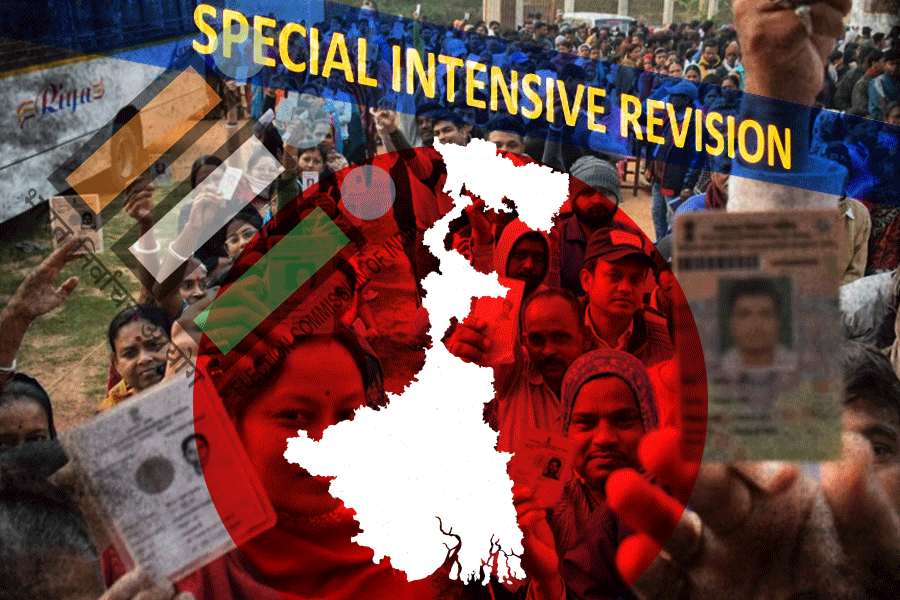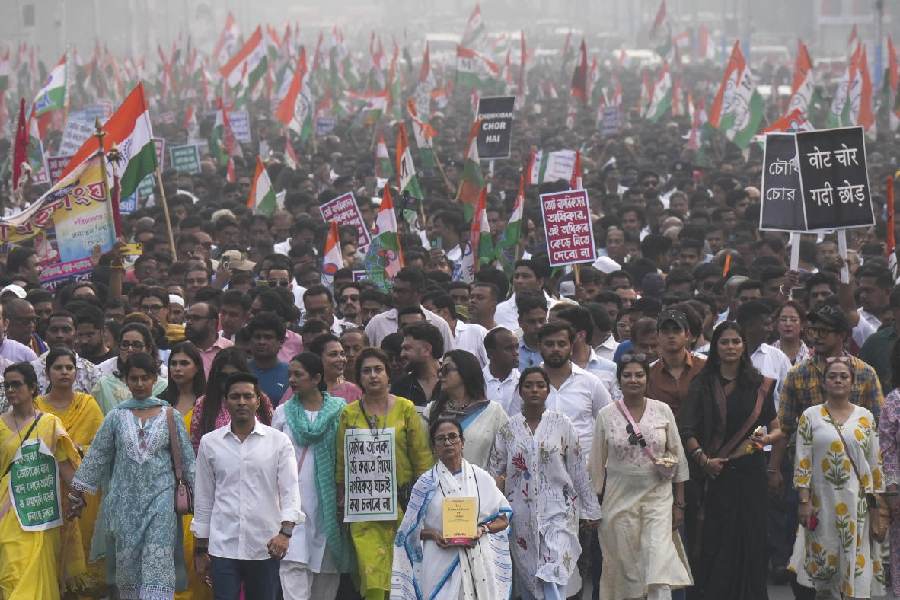 |
There was a time when, in the cinegoer?s mind, the word gaon would instantly evoke the image of picture-perfect cottages with a backdrop of a lush paddy field, in which a knee-length-dhoti-clad Manoj Kumar ? or Jeetendra, if you prefer ? would be prancing around, sickle in hand, a piece of ragged red cloth tied in a macho knot around his head. Or, it would bring to mind kohl-eyed village belles in swirling ghagras and saucy cholis, sashaying down an unmetalled road in a queue, matkas atop their head, the coy smiles on their lips denoting their innocent joie de vivre. The colourful, ethnic set-up reflected a timelessness and vulnerability that were the USPs of a pan-Indian village, and was meant to tug at the heartstrings.
Today, that village ? which seems to have returned with a bang with the dawn of the new century ? though naturally remaining beautiful, has evolved into one with a more definite character and an essence specific to the locale. Ram Gopal Verma had once declared, with considerable aggression, ?I?m targeting the urban multiplexes, the sophisticated media-savvy crowd. Frankly, I couldn?t give a f*** for the villages.?
As opposed to that, the more earthy breed of directors like Ashutosh Gowariker, Mahesh Dattani and even Yash Chopra are now making inroads into the ?real? and authentic India which ? despite the tech-hub it is touted as ? still lies in its villages.
The stress being on realism, the black stones of the river bank in Swades were painted brown. ?Charanpur is supposed to be a village in the heartland of central India where the ghats are usually brown. Since it is a Hindi film, I wanted to zero in on a Hindi-speaking belt. It was convenient, from the point of view of production, to shoot in four villages near Wai in the interiors of Maharashtra. But, for the sake of authenticity, we painted the ghats ? made of black stone in Maharashtra ? brown,? explains Gowariker. A mud-wrestling match ? between the hero Shah Rukh and a wrestler-cum-postman ? shot on the ghat is also in keeping with the nature of recreation in a central India village.
In the past, only parallel cinema stressed on realism. Now, with the blurring of the distinction between art and commercial Hindi films, the real-on-reel factor seems to have gained in prominence. Small wonder, village India in a mainstream Bollywood production is a lot more recognisable, tangible, rooted and authentic. More so because it no longer serves as an exotic, romanticised background against which a hackneyed plot unfolds. Having moved into the foreground and skilfully woven into the plot, it has become a character in its own right and, as a bona fide member of the film?s cast, tries to carry conviction. The life and times in Champaner, thus, is as important in Lagaan as its hero Aamir Khan, Shah Rukh Khan in Swades is inextricable from Charanpur (the village that actually forms his character), Shabana Azmi?s role in Morning Raga can hardly be delinked from the small village in Andhra Pradesh where all the action is set, and the hamlet near Chandigarh is intrinsic to the plot of Veer Zaara.
Filmmaker and dramatist Mahesh Dattani attributes this sudden return to realistic roots to a shrinking universe. ?The world has become small thanks to the progress made in the field of technology. So even remote places have become accessible. People now have a pretty good idea of not only places but also of what?s happening where. That?s probably why they want to see an element of reality in both the story and the setting,? he says.
Dattani?s Morning Raga is set in a village in Andhra Pradesh. Brick houses with courtyards that reflect an old-world charm, ordinary village folk ? one of whom regularly conducts serious conversations with his buffalo, Annapurna ? lush, green fields and vibrant earthy colours are some of the highlights of the village. Juxtaposed with this is the city portrayed in grey and silver silhouettes, in order to show the stark contrast between the rural and urban settings. ?I needed a river, a temple and a bridge for my film. That took me to east Godavari. I had already seen photographs of the exact locations, so I was fairly sure I?d be shooting there,? recounts Dattani.
While not all aspects of rural existence are straight out of Utopia, few directors are willing to focus on those less happy. Both Dattani and Gowariker admit as much. The former, by his own admission, refrained from showing ?the ugly parts of Andhra in the film?, while the latter lightly touched upon the Panchayat system and problems of caste and poverty in Swades.
Then there are those who would prefer to believe that all?s right with the world in its rustic reaches. Take, for instance, the Elysian character of the village Hoshiarpur in Veer Zaara. Life there, in a nutshell, is beautiful and everyone lives happily ever after.
Yash Chopra, however, doesn?t believe that this is far from reality. ?I come from Punjab which is why I was able to capture its essence and flavour,? he contends. ?People in the villages of Hoshiarpur and Ranjitpur are still innocent, honest and vulnerable. Corruption hasn?t set in as yet in those parts. In fact, while shooting, many villagers came forward to help us in any which way they could. They aren?t very well off but they are hardly commercial, like people in the cities. Hospitality is their strength and it?s their spirit of bonhomie that makes them so endearing. That is just what I have tried to capture in the film,? he says in earnestness.
Point taken. Hospitality, after all, may be one idea that is common to all villages in India ? north, south, east or west. As is evident from the gesture of a starving farmer in Swades. Depriving his own family of a meal, he feeds the hero Shah Rukh and feels a sense of contentment as the hero munches on the morsels of food he is given. That, in essence, is reality.

